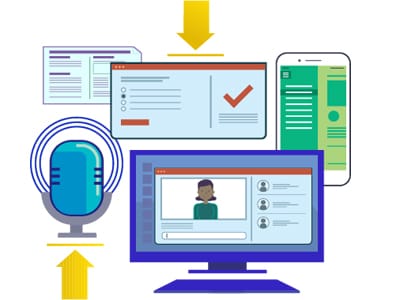Building blended learning solutions on a budget is not a hard choice to understand, but it can be hard to do. Follow these tips to figure out where to start, how to identify big wins to build your support and momentum, and the practical how-tos of getting development and delivery done with agility, even on a shoestring.
1. Assess Your Organization’s Learning Needs To Find Big Wins
Before you start cranking out new blended learning courses, get smart about which topics will make the biggest impact on your organization. This knowledge will guide you to make good decisions about how and where to spend your blended learning budget.
A few criteria to consider:
- Largest audience
- Most crucial skills
- Biggest revenue boost or cost reduction
- Biggest risks
- Stable content (Sustained usefulness provides a long-term return.)
2. Inventory Your Existing Learning Assets, Starting With Potential Big Wins
Even if you intend to inventory all your learning assets, start with the high impact topics so you can take action on them first. Big wins build support. Quick wins build momentum.
For each piece of content:
- Is it accurate, current, and credible?
- Is it in a form learners can easily find and use?
- Could some or all of it be repurposed into a blended learning format for better outcomes (supplemental microlearning, on-the-job activities, sneak peek preview videos)?
3. Make Finding Content Easy
Get more use and value out of your learning assets by making them more accessible to learners. Learning portals and learning maps reduce clicks to access content and increase learners’ confidence that they have found the right material.
Learning portals are searchable, organized repositories for the many kinds of blended learning resources: WBTs, multimedia materials, on-the-job support, etc. As you build more blended learning, the number of learning assets for a given course will proliferate. An easily searchable repository is critical to keeping diverse training elements accessible and useful.

Learning maps are guides through a curriculum by job level or even at the individual level. Courses and all other materials are listed in sequence. Learners can see exactly what is relevant to them and access elements via their learning map.

For maximum benefit, provide both a learning portal and learning maps so learners can either search or follow the path, depending on their need.
4. Use What You Have
This is a huge strength of blended learning: you can leverage the best of what you already have – and we don’t only mean content. Using and re-using what you have, works for software tools and communication channels too. For optimal reinforcement of learning, spread learner interactions over time and engage learners through many channels. Taking advantage of channels learners are already familiar with and use regularly can save tremendous time, energy, and budget compared to blazing new communication paths.
- If your target audience already attends staff meetings and town halls, can you align your content and piggyback on those meetings?
- Where do your learners go online? If you have an active community of practice or forum, consider using it to distribute learning.
Instead of selecting, buying, and implementing a new software tool which might require its own change management and training effort, can you use a tool already in place?
- Instead of licensing a new tool specifically for, say, internal SMS, check the collaboration tools your organization already uses to see if it includes an SMS component.
- If your LMS is good for tracking and reporting but users can’t find the materials they need, consider creating a learning portal to sit on top of the LMS for a smoother learner experience. Believe it or not, with some custom programming, SharePoint (which most of our clients already use) is great for portals, like this role-based microlearning portal.
5. Choose High Impact Over High Gloss
In the age of YouTube, learners judge content quality by its usefulness and prefer authenticity to polish. Good content trumps slick production values. Low tech can have high impact. Spend your budget on designing content and getting the message right before you spend it on a professional video crew and studio recording. Smartphones on tripods are fine for most video capture, as in this example:
6. Flip The Classroom
Look for opportunities to shift the focus from the instructor dispensing knowledge to the learner acquiring knowledge and skills. Self-managed, work-based activities at the work site increase learner engagement, improve learning and retention, and are often less costly. Learners get the benefit of both discovery learning and the instructor’s experience when they report back to the class with their results. (Monica Savage discusses the flipped model here.)
7. Manage Internal Projects Like External Projects
Internal projects are often less closely stewarded and supported than external projects. When they drag on, it inflates overhead costs. To keep your internal projects on track, use Project Management Tools like timelines, budgets, status tracking, and issue tracking.
8. Use SME Time Wisely
Once learning objectives are set for a course, prepare a draft for the SME to mark up in the initial interview. Sure, the SME will make a lot of changes. But providing an initial framework is usually faster for them than starting from scratch. Help SMEs help you by making good use of their time.
Summary
To build blended learning solutions on a budget:
- First look for potential big wins as you assess what you need versus what you have.
- Use what you have in terms of content, tools, and delivery channels.
- Make access easy with searchable learning portals and learning maps.
- Combine well-designed content with low-tech capture technology, flipped classrooms, Project Management, and good use of SME time.
Coming up in our next article: how to vet vendors to get your money’s worth.







